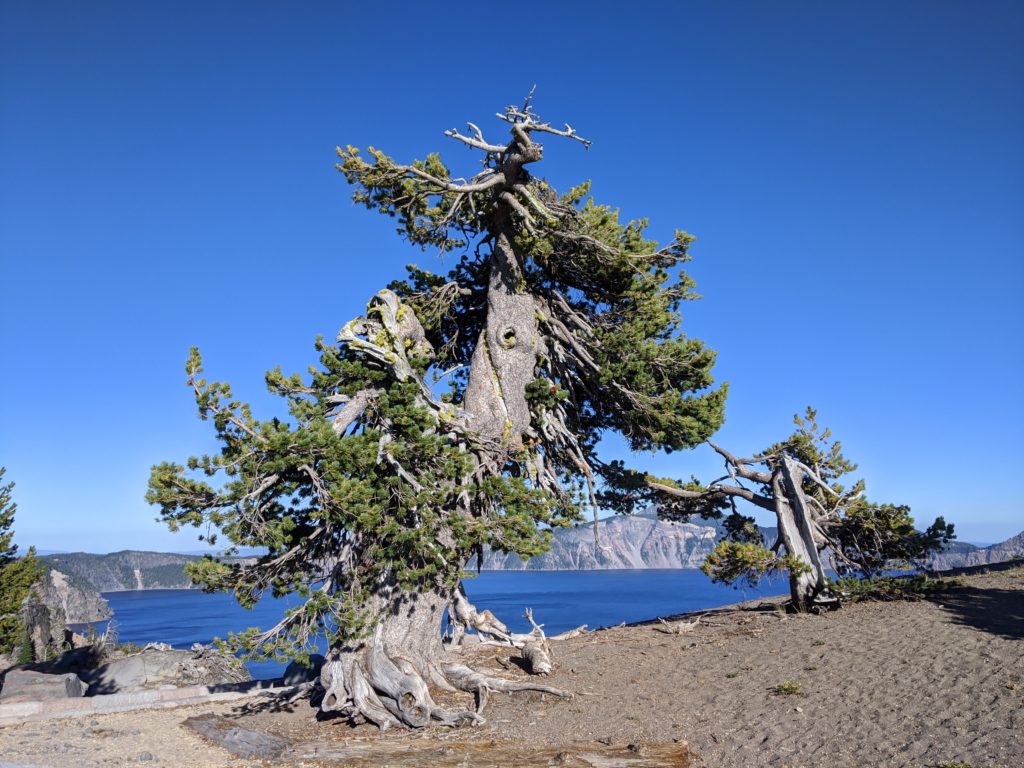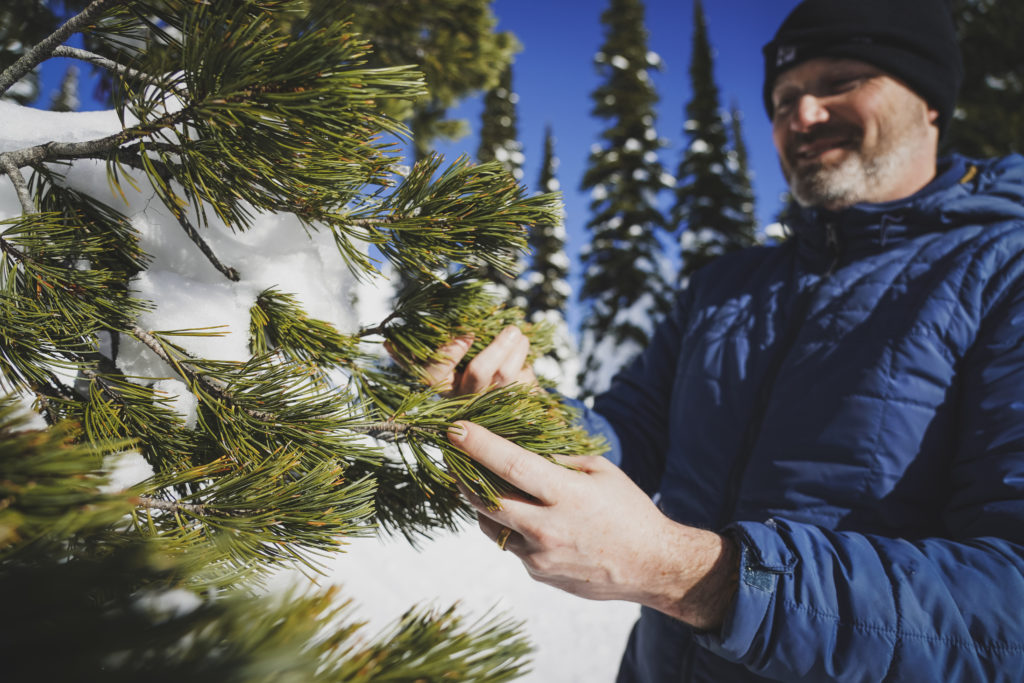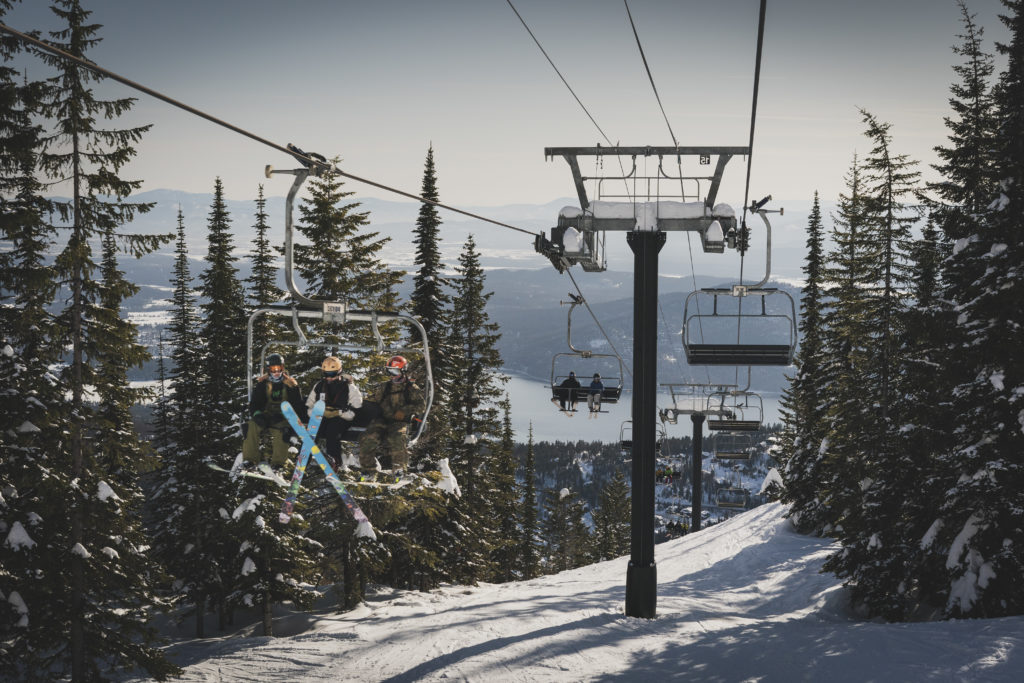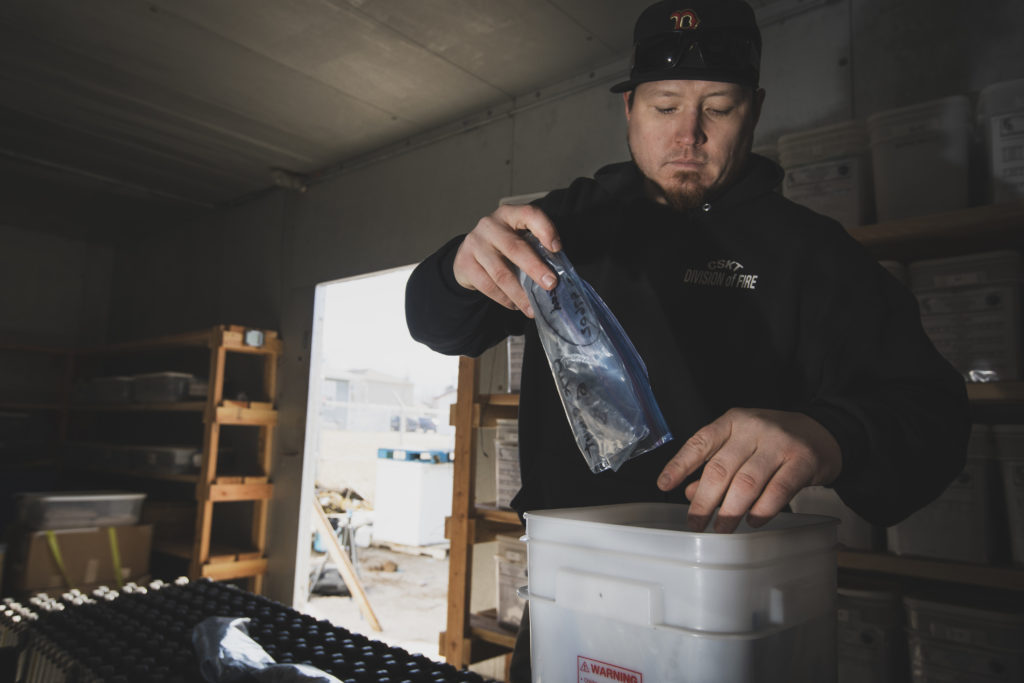Last updated on February 10th, 2024

Whitebark pine is a scraggly tree that few people ever see, given that it only grows upwards of 6,000 feet. But it is one of the most important tree species in the western United States. Grizzly bears, for example, fill up almost exclusively on whitebark pine seeds before going into hibernation. High-elevation trees and plants can’t grow to full size unless there are whitebark pines nearby to block the wind. And the water supply for people in the western U.S. is dependent, in part, on whitebark pine.
Given the value of this tree species, it’s troubling to know there are more dead whitebark pine trees than live ones in this country, according to the U.S. Forest Service. There are so few left that whitebark pine is a candidate species under the U.S. Endangered Species Act and is listed as endangered in Canada.
Many of the forests where the trees once grew are referred to as “ghost forests,” given the large number of standing dead trees.
They have fallen victim to a non-native fungus, white pine blister rust, that prevents the flow of nutrients within the tree. They also have been hit hard by climate change, which has brought longer periods of dry, warm weather — ideal conditions for intense wildfires and an insect, mountain pine beetle, that attacks mature whitebark pines. Under normal conditions, this tree would live for more than 200 years. Some have lived for more than 1,000 years.
Nowhere is the plight of whitebark pine more evident than the Crown of the Continent, the18 million-acre mountainous region that spans northern Montana, as well as Canada’s southern Alberta and British Columbia provinces, and includes Glacier National Park. Only one in 10 whitebark pine trees in this region is untouched by blister rust.
There are five other “Hi5” tree species — so named because they only grow at high elevations and their needles are attached to branches in groups of five — in the western U.S. that are in decline. But whitebark pine is in the most danger and is the canary in the coal mine for other Hi5s.

The first-ever whitebark pine restoration plan for the Crown of the Continent is in the final stage of development and already has buy-in from a diverse group that includes tribal members, skiers, federal and state agencies, conservationists (including US Nature4Climate member American Forests), academics and others. The plan will prioritize what parts of the forest need to be restored and the climate-smart practices we need to use to restore them.
A key partner in this undertaking is northern Montana’s Whitefish Mountain Resort, one of the top-rated ski resorts in the country and a popular spot for hiking and mountain biking in the warmer months. The resort might seem like an unusual bedfellow for an endangered forest, but it’s a perfect fit. Scientists, conservationists, U.S Forest Service staff and others use the resort’s chair lifts in the winter to get to the top of the mountain, where they then ski to stands of whitebark pine trees to do their work. In the warmer months, the backcountry roads and trails managed by the resort make it easier for them to drive into the forests.
In 2016, Whitefish was the first resort in the country to become certified by the Whitebark Pine Ecosystem Foundation as a whitebark pine-friendly ski resort. It was recognized for how it helps the U.S. Forest Service and others, as well as what it does to educate the general public about whitebark pine.
“The chairlift is a great opportunity to teach people about whitebark pine,” says former resort Public Relations Manager Riley Polumbus. “They can see it when we are riding up the lift together.”

What many people are interested in learning, after hearing about the dire circumstances this tree species faces, is what this means for them. Without whitebark, skiers would be more likely to get lost when skiing in foggy conditions, as whitebark pines — one of the few trees at high elevations — help guide the way. And they would be less likely to quench their thirst, given that whitebark pine holds snow in place in the winter (thanks to its candelabra-shaped wide crown that provides shade, which slows snowmelt) and gradually releases it into rivers in the warmer months. The river water eventually becomes drinking water.
The Confederated Salish and Kootenai Tribes of the Flathead Nation also is a key player. It manages the 1.3 million-acre Flathead Indian Reservation — 10 percent of which is whitebark pine forest.
The tribal members’ deep and centuries-old connection to the land is what motivates them to invest time and money in caring for the forest.
The tribe created a forest management plan in the 1990s that includes goals for whitebark pine. They have been following the plan ever since it was approved in 2000. But the true relevance and urgency behind the plan did not become apparent until 2013, when people on the reservation started to visibly notice changes in the forest, many of which they attributed to climate change. For example, trees that typically grew at low elevations were moving up the mountain, to cooler climates, where they were outcompeting trees that were already there.
That’s when they decided to create a climate change strategy to supplement the forest management plan.

Photo Credit: Morgan Heim/American Forests.
The strategy incorporates forestry practices similar to those being used by the U.S. Forest Service, such as caging cones on “plus trees.” Tribal members have collected thousands of seeds from the cones they have caged in the last few years and have already planted more than 2,000 trees from those seeds on 9 acres.
But their work goes beyond planting trees, an approach American Forests refers to as “carbon offense” because the new trees capture carbon. They also play “carbon defense” to prevent forests from degrading and, then, releasing carbon when large and intense wildfires, as well as other events, occur.
For this tribe, the best carbon defense play is purposefully setting fires — called controlled burns — that eliminate trees that naturally would not be in a certain part of the forest. For whitebark pine, a tree that does not grow well in shade, that means removing other types of trees that block the sun. The fires, which are low intensity and only at ground level, also prevent a build-up of vegetation that is essentially fuel for what can become an out of control and intense wildfire.
Controlled burns were common on the reservation until 100 or so years ago, when fire got a bad name and, therefore, suppressing fires became the norm.
“Our elders have been telling us for years to stop putting out fires,” says Tony Incashola, Jr., who oversees the tribe’s forestry agency. “Fire is natural. Back in the day, people did not have tools. Fire was their only tool for managing forests. People knew how to burn, what to burn and when to burn.”
It is forward-thinking forest restoration like this from tribes and companies – as well as others – that will help ensure whitebark pine can provide benefits to people and wildlife well into the future.
Jill Schwartz is the Vice President of Marketing and Communications at American Forests.
